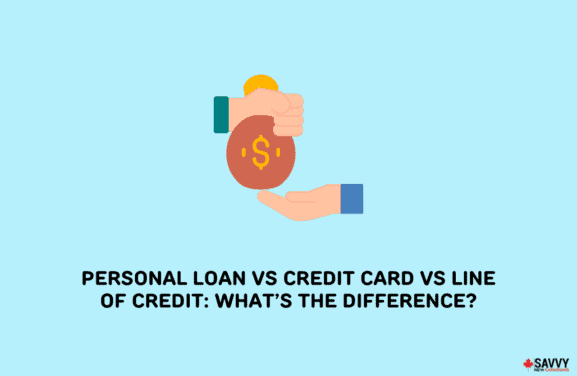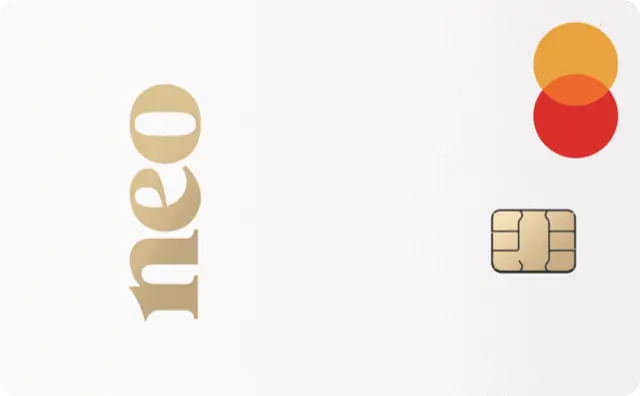Peer-to-Peer lending platforms offer alternatives to borrowers looking for personal or business loans and investors searching for yield.
Also referred to as P2P lending, peer-to-peer lending websites connect borrowers directly to investors willing to provide them with secured and unsecured loans.
This guide covers how peer-to-peer lending works in Canada (for both borrowers and lenders) and the best P2P lenders in Canada.
Top Peer-to-Peer Lenders in Canada
Peer-to-Peer lending is not as popular in Canada as it is in the U.S. The top P2P lenders in Canada are goPeer and LendingLoop. Although LendingLoop is now closed to new clients.
In the United States, P2P platforms include Lending Club, Prosper, Funding Circle, SoFi, and Peerform.
| P2P Lenders | Loan Type | Max Loan Amount | Loan Rates |
| goPeer | Personal unsecured | $25,000 | 8% to 33.92% |
| Lending Loop | Business | $500,000 | 4.96% to 24.93% |
1. GoPeer: Best For Personal Loans
goPeer is a peer-to-peer lending platform for individual borrowers and investors.
This company was founded in 2022 and has received over $90 million in loan applications since then.
Borrowers complete an online application and are anonymously matched with Canadian investors interested in funding all or a portion of their loans.
You can borrow up to $25,000 on this platform for 36 or 60 months, and loan rates range between 8% and 33.92%, depending on your credit rating.
The eligibility requirements for borrowers on goPeer are:
- Age 18 or older
- 600+ credit score
- Regular income of $15,000+ per year
- Canadian bank account
- A resident of Canada for 3+ years.
On the investor side, you can fund loans on goPeer and earn returns ranging from 7.5% to 28%.
The minimum funding to start lending on goPeer is $1,000. After your account is funded, you can allocate a minimum investment of $10 per loan and invest in as many loans as you wish.
There is a 1.5% annual servicing fee which is deducted from the monthly loan repayments.
goPeer is available across Canada. Learn more in this review.
2. Lending Loop: Best For Business Loans
*No longer accepting new clients**Lending Loop is the top P2P lending platform in Canada for business loans. It was founded in 2014 and has been used to provide over $80 million in small business loans.
Small business owners looking to get a loan complete an online application and gain access to over 11,000 lenders on the Lending Loop marketplace.
They can borrow up to $500,000 with flexible terms and rates ranging between 4.96% and 24.93%.
Eligibility requirements for borrowers on Lending Loop include:
- At least 1 year in business
- $100,000+ in annual revenue
- Personal credit score of 640+
Business loans can be used to fund expansion, inventory purchases, marketing, pay wages, refinancing, and more.
Investors (lenders) can choose loans based on a grading scale that runs from “A+” to “E.”
The riskier a loan note is, the higher the expected return (interest).
Lenders pay a 1.5% servicing fee each year (charged monthly to repayments).
When you invest in Lending Loop here (promo code “e2189c”), you get a $25 bonus after lending $1,500 or more.
Lending Loop is available across Canada. Learn more about how the platform works in this detailed review.
Peer-to-Peer Lending Overview
As already noted, peer-to-peer (P2P) lending involves providing loans to individuals or businesses through an online platform where other individuals finance these loans in exchange for interest payments.
This lending system sidesteps traditional lending institutions such as banks and credit unions and gives borrowers direct access to investors with a wide range of risk tolerance.
The P2P lending company serves as an intermediary between borrowers and lenders, matching them automatically based on set criteria.
Peer-to-Peer lending is also referred to as “crowdlending” or “marketplace lending.”
Types of Peer-to-Peer Loans
You can access P2P loans for various reasons, and the popular types are:
- Personal loans
- Business loan
- Auto loans
- Debt consolidation loans
- Home improvement loans
These loans may also be classified as “secured” or “unsecured,” depending on whether collateral is required to approve your loan application.
How P2P Lending Works For Borrowers
To borrow money on a peer-to-peer lending platform, you will need to submit an application on the site.
If your application is accepted, you will begin receiving loan offers.
When the loan has been funded, the money is deposited in your bank account through direct deposit.
In addition to paying back the loan and interest, an origination fee may also be charged.
How Peer-to-Peer Lending Works For Investors
To invest in a peer-to-peer lending site, you need to register and fund an account with the minimum amount, e.g. $1,000.
Loans are graded to reflect default risk and are securitized in the form of notes.
You can invest in various loan notes and receive monthly repayments that include interest and a portion of your capital.
If borrowers default, the P2P platform will try and recover your investment using collections.
Pros of Peer-to-Peer Lending
For borrowers:
- Competitive interest rates and conditions
- Access to loans when traditional lenders don’t work out
- Easy, online application
- Can pay off your loan faster without prepayment penalties
For lenders:
- Earn higher returns compared to bank savings or Guaranteed Investment Certificates
- Help others succeed
- Offers flexibility in choosing types of loans and risk levels
- Helps to diversify your investment portfolio
Downsides of Peer-to-Peer Lending
For Borrowers:
- You will need a good credit score to qualify for a loan
- Other fees may apply in addition to the interest rate
- It may take some time to receive funds
For Lenders:
- Borrowers can default, resulting in a loss of capital
- Invested funds are not protected or insured by the government, e.g. through organizations like the Canadian Investor Protection Fund (CIPF)
- A secondary market to offload your loan notes before maturity does not yet exist in Canada
- There is limited regulation and oversight for the peer-to-peer lending space in Canada
P2P Lending Alternatives in Canada
If you need a personal or business loan, you can also use a loan comparison site to compare rates.
The three top platforms for secured and unsecured loans are:
- Loans Canada
- LoanConnect
- Loanz
A. Loans Canada
Loans Canada works with lenders across Canada, and you can use the platform to borrow up to $50,000 for 4-60 months.
Loan rates range from 1.99% to 46.96%.
Loans Canada
Loans Canada is a loan comparison platform for all kinds of personal loans, car loans, debt consolidation loans, and bad credit loans. This company holds an A+ accreditation with the Better Business Bureau and features multiple lenders on its website.
Interest rate: 2.99% to 46.96%
Loan term: 3-60 months.
Maximum loan amount: Up to $50,000.
Eligibility: Resident of Canada and employed for at least 3 months with proof of income.

On Loans Canada’s website
B. LoanConnect
LoanConnect is a loan search engine that gives you access to multiple lenders on one platform.
You can borrow up to $50,000 for 6-60 months, and interest rates range between 6.99% and 46.96%.
LoanConnect
LoanConnect is a search engine for finding personal loans online from various lenders. You can use it to find a loan that works for your situation regardless of your credit score.
Interest rate: 6.99% to 46.9%.
Loan term: 3-120 months.
Maximum loan amount: Up to $50,000.
Eligibility: Resident of Canada and the age of the majority in your province or territory.

On LoanConnect’s website
The two peer-to-peer lending sites in Canada are registered as exempt market dealers in all Canadian provinces and territories.
They receive oversight from various agencies, including FINTRAC and provincial securities regulatory authorities.
Investing in a P2P lending site comes with risk; if the borrower defaults and cannot repay their loan, you will lose money.
You can manage your investment/credit risks by diversifying across loans and choosing those with good to excellent grades.
Also, P2P lending should be used as part of a robust investment strategy.
Is P2P Lending Worth It?
Peer-to-Peer lending is great for Canadian borrowers who now have access to alternative platforms outside of mainstream financial institutions.
If you are an investor, you could earn returns that are significantly higher than what your savings and GICs are currently providing.
That said, this alternative lending and investment strategy is new and has its pros and cons.
Since borrowers can default, you should invest per your risk tolerance.
Also, given a lack of protection, if a platform declares bankruptcy, you should only invest funds you can afford to lose.
Related:






